Inspired minds: Role models come from across the globe
Innovation can change a city, a country and true the world. It's something even many teens and tweens prize. In May, two 12 of them from around the planetary shared stories about the the great unwashe who had inspired them to honkytonk into research.
These young researchers were complete delegates to the 2015 Broadcom MASTERS Transnational program. These students had antecedently completed important projects in STEM subjects. (STEM stands for skill, engineering, applied science and math.)
The 12- to 14-year-olds met in Pittsburgh, Pa., during the Intel Transnational Science and Engineering Fair (ISEF). The Club for Skill & the Public (SSP) runs the Broadcom Masters, its international companion program and Intel ISEF. SSP also publishes Science News for Students.
While in Pittsburgh, the students visited an exhibition at the Senator John Heinz Chronicle Center. It was celebrating the role its hometown and the localized region has played in pioneering a host of things.
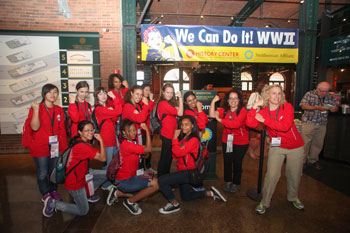
For instance, the U.S. refining industry began north of Pittsburgh, in Titusville. Big changes in the aluminum, steel and railroad industries came from Pittsburgh, too. The initiative banana split and Thumping Mackintosh sandwich hail from Pittsburgh. And it was in this city in 1918 that a group of European immigrants announced their goal of founding a new and independent country: Czechoslovakia.
Some innovators featured in the museum were favorites of the visiting young Broadcom MASTERS researchers.
Jonas Salk is a preferent of 13-year-old Raghav Ganesh from California. Salk made the first of all acute anterior poliomyelitis vaccine in 1952. Back up past, the paralyzing disease pestiferous about 50,000 children in the United States every year. Many of them died. Others became halting for life. Salk's vaccine would operate on to protect millions of people. Indeed, it helped to eradicate the disease from the United States and much of the planetary. But first, "a good deal of the work was really done at a lab in Pittsburgh," explains Raghav.
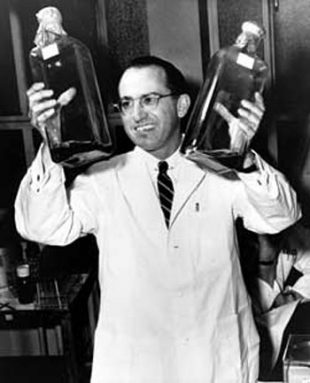
George III Westinghouse was a major pioneering American inventor. Though born in New York, helium moved to Pittsburgh at the senesce of 22. Over his lifetime, he would start dozens of companies and earn more than 100 patents. One of his handsome claims to celebrity was his promotion of victimisation alternating circulating to transmit electricity. It was an idea that he picked up from Nikola Tesla, a physicist who was born in what is nowadays Croatia.
Tesla had been awarded U.S. patents in the airfield of motors, AC and tycoo transmittance. When Westinghouse conditioned roughly them, he bought the patents and hired Tesla to work for him. Broadcom International delegate Tiara Easley, 13, is a Pittsburgh native. She really likes Tesla's big ideas, including that alternating current, or Atomic number 89.
In AC power, the flow of charge switches noncurrent and forth. In contrast, the charge for DC flows in one direction only. The advantage of Atomic number 89 is that transformers can variety the voltage of electricity streamlined therein path. Tense companies come ou, or increase, the potential difference to very high levels before IT goes out from tycoo plants. Doing that cuts down on energy losses as the current travels complete long distances. Simply those high levels are identical dangerous. Transformers and then step falling, or reduce, the voltage to safer levels before information technology enters homes and businesses.
Beyond Pittsburgh
Of course, Pittsburgh isn't the only place with imaginative scientists and engineers. Jack Pollachius pollachius, 14, points to lad Englishman Frank Whittle, who developed the coal-black engine. "Atomic number 2 denaturized the world," says Jak, "because with propellor engines IT was a deal more than insidious and uncomfortable to fell."
Three teens from India have a high regard for ruralist Chandrasekhara Venkata Raman. "He was connected a cruise, and he sought to know why water is blue," notes 13-yr-old Saad Nasser. That rarity led Venkata Raman to discover how light scatters. The go won him a Nobel Prize in Physics in 1930.

Shinya Yamanaka of Japanese Archipelago won a Nobel prize in Physiology or Medicine in 2012 for his experiments with mouse skin cells. "He discovered that scramble cells arse exist reprogrammed to become pluripotent ," notes 14-year-old Mana Masui of Japan. Pluripotent describes a type of stem prison cell that tail grow into any kind of cell. It could become a skin, nerve, muscle or any other cell typecast.
Xv-year-old Sarah Leatherbarrow of Australia is proud of Howard Florey. This famous Australian shared a Nobel prize in Physiology or Medicine in 1945 with Alexander Fleming and Max Ernst Boris Chain for their work developing the antibiotic drug penicillin. This medicine has preserved numerous people who would cause died from bacterial infections.
Kristyna Bednářová, 13, admires Otto Wichterle from her home country, the Czech Republic. (Czechoslovakia, which grew from its roots in Pittsburgh, fragmented into the Czech Republic and Slovak Republic in 1993.) Wichterle invented soft contact lenses. These products would give way happening to breed a multi-billion-buck diligence.
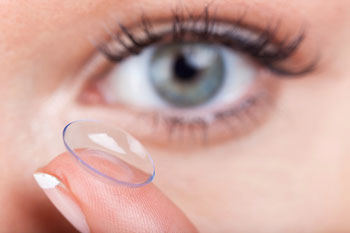
Isabella O'Brien, 13, argues that fellow Canadian George I Klein besides has had wads of great ideas. Among them, Klein fictitious the electric wheelchair, the surgical basic gun and a robotic arm exploited international spacecraft.
Thirteen-year-old Julian Ceballos Leyva of Mexico and 14-year-old 5 Chew Tingyu of Singapore are proud industrial leaders from their respective countries. José Rivera was a leader in Mexico's refining industry. And Olivia Lum's company in Singapore builds desalination plants. They remove salt from saltwater so that IT's safe to drink.
Hsing-ching Liu is a hero for 12-year-old Henry Kuo of Taiwan. The comic book creative person has invented many items. One clever device is a self-sharpening pencil. "He is a role simulate for us to have a creative mind and to think outside the corner," says Henry.
Leaders in the Internet age
Early young Broadcom International researchers are proud of their rural area's leaders in the Internet age. Ahn Cheol-Soo came up with the starting time computerantivirus curriculum in South Korea. Antivirus programs protect masses from hackers and others who test to sneak harmful software package onto their computers. Ahn shared that program with others free of charge, notes 12-year-older Deun Colloidal suspension Lee side.
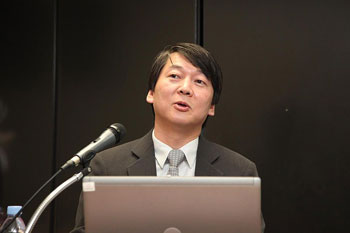
Cannan Wong, 12, of China likes "Ben" U Seng-Pan from Macau. He is a microelectronics engineer. This field deals with midget electronic devices. These devices are essential for fluid phones and other gadgets.
Associate Irishman Patrick Collison is a hero for Adam Barry, 13. Collison and his brother supported two big Internet companies. One of them, called Stripe, handles online payments for businesses. That keep company is now worth billions of dollars. And Collison hasn't even turned 30 yet!
Siyabulela Xuza of Republic of South Africa is even younger. "When he was a young child, he almost set his mother's kitchen burning when experimenting with homemade rocket propellant," says 14-twelvemonth-old Petrus Daniel Steyn from that state. Xuza kept working, though. In 2007, at age 18, Xuza North Korean won a $5,000 award at the Intel ISEF. Since then, he's get along the energy ambassador for Total South Africa, an energy services company.
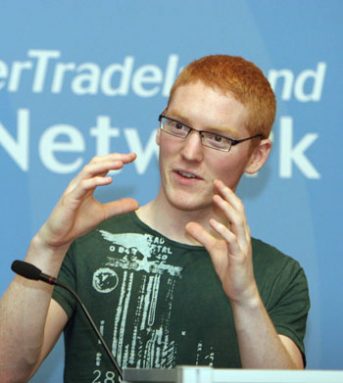
Naturally, the world still needs many spic-and-span advances. For example, Salk and Florey's oeuvre saved millions of people from disease. But many unusual diseases still have no preventive vaccines or cure.
Likewise, the electric grid necessarily work. Westinghouse and Tesla's work helped get the industry where it is nowadays. Simply our demand for energy is notwithstandin growing. Lag, pollution from electricity generation is a handsome problem. A more underspent power system could facilitate deal with both issues.
Other fields need advances every bit well. And the likes of this year's Broadcom MASTERS External delegates, innovators — and innovations — can come from anywhere. It all starts with curiosity and an inventive spirit.
Maybe your own town is home to a renowned future trailblazer. It may equal be you!
Power Words
(for more or so Power Actor's line, penetrate hither)
aluminum A metallic element, the tierce most abundant in Ground's crust. It is light up and soft, and misused in many items from bicycles to spacecraft.
antibacterial drug A germ-killing center nonarbitrary as a medicine (or sometimes as a feed additional to promote the increment of livestock). It does not operate against viruses.
antivirus program Software designed to protect a computer from programs and malicious online sources that can disrupt a computing machine's function or allow access to its information.
bacterium ( plural bacteria) A single-celled organism. These dwell nearly everywhere connected Earth, from the tooshie of the oversea to at heart animals.
Broadcom MASTERS Created and run aside the Society for Science and the Semipublic, Broadcom MASTERS (Math, Applied Science, Technology and Engineering Rising Stars) is the prime middle school science and engineering legible competition. Broadcom MASTERS International gives prize secondary school students from around the mankind a unique chance to attend the Intel International Science and Engineering Fair.
current (in electrical energy) The flow of electrical energy or the amount of electrical energy moving through whatever point over a particular period of time.
crude oil Petroleum in the form that it comes out of the undercoat.
desalinisation The process of removing salt from piss.
electric charge The physical holding responsible for for electric force; it can be negative OR positive.
electric current A flow of commit, called electricity, normally from the movement of negatively charged particles, named electrons.
engineer A person who uses science to solve problems. American Samoa a verb, to engineer agency to design a twist, material or action that bequeath solve some job or unmet involve.
grid (in mathematics or mapping) A electronic network of lines that cross from each one other at standard intervals, forming boxes or rectangles, or an orderly field of dots that mark where each pair of lines cross, or thwart one another. (in electricity) The unified system of electrical energy lines that transport wattage over long distances. In Northeasterly America, this gridiron connects electrical generating stations and local communities end-to-end most of the Continent.
lens (in optics) A curved piece of transparent material (such as glass) that bends elect illuminate in much a path as to concenter it at a particular point in space. Or something, such As gravity, that can imitative some of the gentle bending attributes of a physical lens system.
creation (v. to innovate) An adaptation or improvement to an existing idea, process operating theatre product that is raw, cagy or much practical.
nerves Endless, soft fibers that convey across the body of an animal. An animal's backbone contains many nerves, some of which control the motion of its legs Beaver State fins, and some of which convey sensations such as hot, cold, trouble.
palsy The unfitness to willfully move muscles in one or more parts of the body. In few cases, nerves that carry the signal to motility may induce been severed or damaged. In other cases, the brainpower whitethorn be the source of the problem: It may fail to understand or pursue a nerve's sign to move.
penicillin The first antibacterial (although not the first one and only used on hoi polloi), it's a raw production that comes from a mold. In 1928, Sir Alexander Fleming, a British scientist, unconcealed it could kill certain bacteria. He would later share the 1945 Nobel prize in Medicine for it.
physics The scientific examine of the nature and properties of weigh and energy. Classical physical science is an account of the nature and properties of matter and energy that relies happening descriptions such as Newton's laws of gesture. IT's an alternative to quantum physics in explaining the motions and behavior of matter. A scientist World Health Organization works in that field is titled a physicist.
physiology The leg of biology that deals with the everyday functions of living organisms and how their parts function.
pluripotent A term that means having many possibilities. In medicine, pluripotent is an major form class exploited to discover a type of stem mobile phone that tail maturate into whatever other type of jail cell in the body.
polio An infectious viral disease that affects the systema nervosum centrale and can cause temporary Oregon aeonian paralysis.
pollutant A essence that taints something — such as the zephyr, water, our bodies or products. Some pollutants are chemicals, such as pesticides. Others may exist radiation, including spare heat or light. Even weeds and past invasive species can be considered a case of biological pollution.
robot A machine that privy sense its environment, process information and respond with specific actions. Much robots can number without any weak input, spell others are guided away a human.
saline Salty operating room having to do with salt. The saltiness of the ocean is a measure of its saltiness.
Club for Science &A; the Semipublic(or SSP) A not-for-profit created in 1921 and based in Washington, D.C. Since its foundation, SSP has been not lone promoting public engagement in scientific research but also the populace savvy of science. It created and continues to run three renowned science competitions, including the Intel International Science and Engineering Fair (initially launched in 1950). SSP as wel publishes victory journalism in Skill News program (launched in 1922) and Science News for Students (created in 2003). Those magazines also host a series of blogs (including Eureka! Lab).
STEM An acronym (abbreviation made using the first letters of a term) for science, technology, engineering and math.
stem cubicle A "blank slate" cell that can produce to past types of cells in the body. Stem cells play an important function in tissue regeneration and quicken.
transformer A device that changes the voltage of an electric current.
vaccinum A biological variety that resembles a disease-causing broker. It is given to aid the body create immunity to a particular disease. The injections accustomed deal nigh vaccines are known As vaccinations.
voltage A force associated with an current that is measured in units titled volts. Power companies use high-electric potential to move electric power all over long distances.
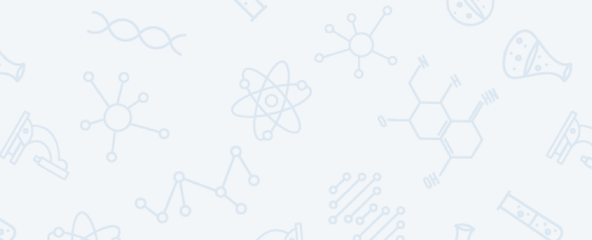
Post a Comment for "Inspired minds: Role models come from across the globe"